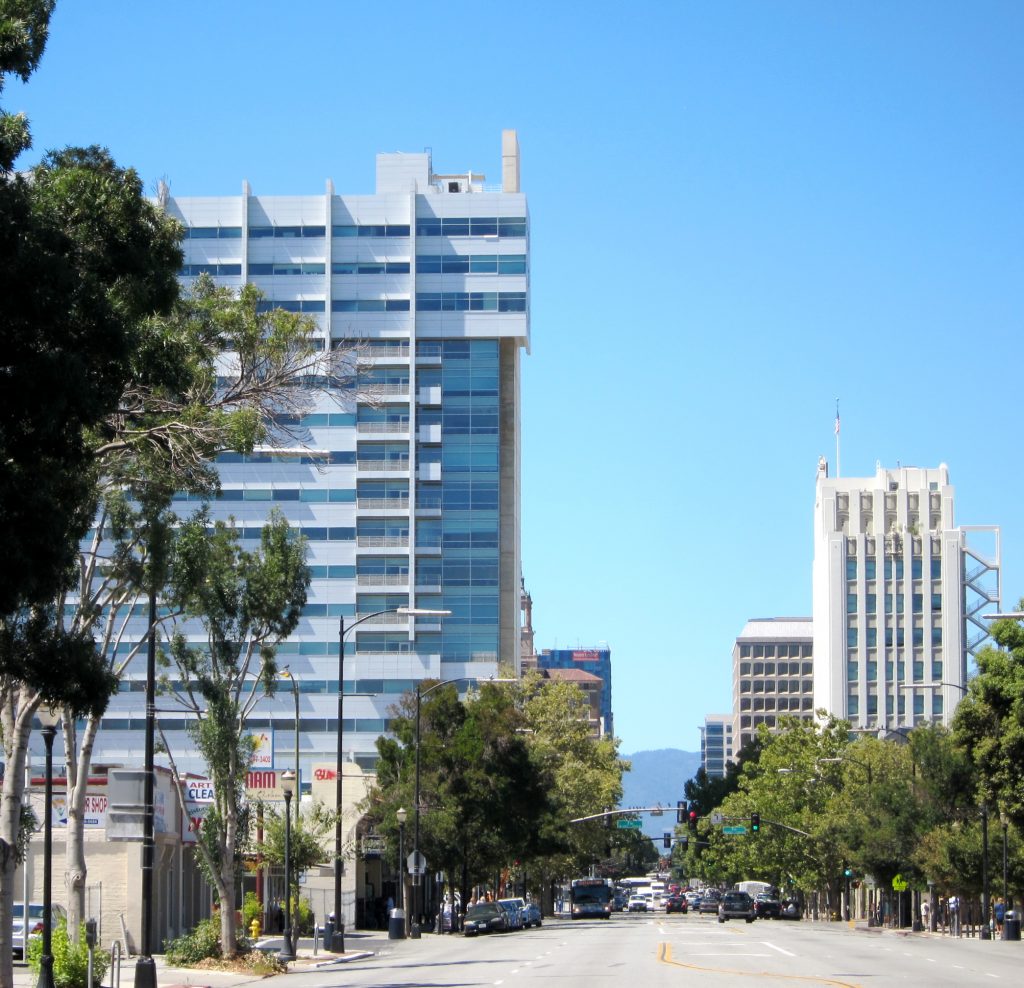In a top 20 list dominated by cities in Texas and Arizona, the Bay Area’s Milpitas makes a brave showing at 15th in a new U.S. Census Bureau ranking of the fastest-growing incorporated places in the country with more than 50,000 people.
![]()
The new Milpitas Transit Center connects the city to the region.
It is the only Bay Area city to appear within the fastest-growing cohort.
Situated to San Jose’s north and east, the town, whose name means “little cornfields” in Spanish, grew 5 percent from mid-2018 to the middle of last year, reaching not quite 85,000 residents. That’s slightly less than its rate of growth in 2014-15, when Milpitas also made a Census Bureau list of fast-growing U.S. cities. Its most current rate of growth compares to a 12 percent growth rate for the fastest growing city in the country: Leander, Texas, an exurb northwest of Austin that is near to Round Rock, the headquarters city of Dell Computer. Leander has 62,600 residents.
Milpitas’s growth was echoed to a lesser extent by its East Bay neighbor Fremont, a much larger city that saw its population rise by 1.4 percent during the year to more than 241,000.

The two cities’ growth contrasts with population losses in many of the more central Silicon Valley cities including the region’s largest major city, San José. Smaller places that have been among the region’s technology company darlings also lost, including Palo Alto, Cupertino, Mountain View and Sunnyvale, according to the same Census Bureau estimates.
Other Bay Area cities that lost population include the peninsula’s San Mateo, Redwood City and Daly City. In the East Bay, Berkeley, San Rafael, Pleasanton, Petaluma, Alameda, Livermore, Antioch, and San Leandro all lost population. So did Novato and Napa.
The movement of population from the more densely crowded and expensive heart of Silicon Valley to the East Bay is well-established. Of the region’s largest three urban cities—San José, San Francisco and Oakland—only Oakland in the East Bay saw its population rise notably. In San Jose, the outmigration of existing residents accounts for all of the population decline. Without international in-migration, the declines would be dramatically greater.
Estimated Population Change for Select Bay Area Cities of 50,000 or more; July 1, 2018-July 1, 2019. Source: U.S. Census Bureau, Population Division
Milpitas +5 percent 84,196 (2019 Pop. Est.)
Tracy +3.2 percent 94,740
Dublin +2.2 percent 64,826
Fremont +1.4 percent 241,110
Santa Clara +1.0 percent 130,365
Oakland +0.9 percent 433,031
Gilroy +0.8 percent 59,032
Walnut Creek +0.5 percent 70,166
South San Francisco +0.3 percent 67,789
San Ramon +0.2 percent 75,995
San Francisco +0.1 percent 881,549
Sunnyvale -0.1 percent 152,807
Livermore -0.1 percent 90,189
Redwood City -0.2 percent 85,925
Berkeley -0.2 percent 121,363
Hayward -0.3 percent 159,204
San Mateo -0.4 percent 104,430
Mountain View -0.5 percent 82,739
Daly City -0.6 percent 106,280
San José -0.6 percent 1,021,795
Union City -0.6 percent 74,107
Pleasanton -0.7 percent 81,777
Alameda -0.9 percent 77,624
Cupertino -1.2 percent 59,276
Palo Alto -1.3 percent 65,364